*NURSING > STUDY GUIDE > NUR1211C study guide exam 1 OB / NUR3411C Maternal Newborn, Chapters 7, 8, 9, 10, 11, 12 & 24 Questi (All)
NUR1211C study guide exam 1 OB / NUR3411C Maternal Newborn, Chapters 7, 8, 9, 10, 11, 12 & 24 Question types: Multiple choice
Document Content and Description Below
NURSING NUR1211C study guide exam 1 OB / NUR3411C Maternal Newborn Study Guide: Test 1 Chapters 7, 8, 9, 10, 11, 12 & 24 Question types: Multiple choice, select all that apply This study guide is... intended to be a tool, it is not all inclusive of the content on the examination. Chapter 7 Function of the corpus luteum o Progesterone and estrogen are secreted by the corpus luteum initially o Hormones secreted maintain the uterine lining until the placenta takes over at around 11 weeks o Corpus luteum, yellow hormone-secreting body in the female reproductive system. It is formed in an ovary at the site of a follicle, or sac, that has matured and released its ovum, or egg, in the process known as ovulation. o The corpus luteum is made up of lutein cells (from the Latin luteus, meaning “saffron-yellow”), which develop immediately following ovulation, when yellow pigment and lipids accumulate within the granulosa cells lining the follicle. Function of amniotic fluid, umbilical cord, placenta Amniotic Fluid: o Cushions to protect from injury o Controls embryo’s temperature o Permits systemic growth and development o Allows movement, promotes musculoskeletal development o Prevents/decreases adherence of fetus to amnion o Allows cord to be free of compressions o Acts as wedge during labor o Analysis of fluid for fetal health and maturity Umbilical Cord: o Provides circulatory pathway to embryo Placenta: o Metabolic and nutrient exchange between embryonic and maternal circulations Fetal circulation o Ductus Venosus: umbilical vein flows through ductus venosus directly into the inferior vena cava (bypassing the liver) o Foramen ovale: blood from right atrium passes through foramen ovale into the left atrium, pours into left ventricle which pumps into aorta (bypassing the right ventricle) o Ductus arteriosus- from pulmonary artery through ductus arteriosus into descending aorta (bypassing the lungs) Developmental stages- preembryonic, embryonic, fetal stages o Preembryonic stage: First 14 days of development after conception o Embryonic stage: Day 15 until 8 weeks 3rd wk after conception until 8 weeks CR length of 3cm/1.2 in Most vulnerable stage Tissues differentiate into essential organs Main external features develop (most vulnerable so exposure to teratogen increased risk for deficits) o Fetal stage: 9th week until birth Teratogenesis o Embryo is most vulnerable to teratogenesis during the first 8 weeks of cell differentiation and organ system development o May cause malformation of heart, limbs, eyes, and other organ systems o Effects of teratogens (e.g., drug, virus, radiation) depend on the: o Maternal and fetal genotype o Stage of development when exposure occurs o Dose and duration of exposure to agent Chapter 8 Role of hCG, hPL, progesterone, estrogen in pregnancy Human Chorionic Gonadotropin (hCG) o Secreted by the trophoblast in early pregnancy o stimulates progesterone and estrogen production by the corpus luteum until placenta is developed and assumes function Human Placental Lactogen (hPL) o Produced by the syncytiotrophoblast, it is an antagonist of insulin o Increases the amount of circulating free fatty acids for maternal metabolic needs o Decreases maternal metabolism of glucose to favor fetal growth Progesterone o Produced by corpus luteum, then the placenta o Plays the greatest role in maintaining pregnancy o Maintains endometrium o Inhibits spontaneous uterine contractility (preventing SAB) o Helps develop acini and lobules of breasts Estrogen o Produced by corpus luteum, then the placenta o Stimulates uterine development to provide suitable environment for fetus o Aids in development of ductal system in breasts to prepare for lactation Changes in the following systems- respiratory, cardiovascular, integumentary Respiratory system o Increasing levels of progesterone causes: o Increased volume of air by 30-40% o Decreased airway resistance o Allows for 15-20% increase in oxygen consumption o Increased anteroposterior diametero Thoracic breathing occurs as uterus enlarges o Nasal stuffiness and epistaxis (nosebleeds) may occur due to estrogen and progesterone Cardiovascular system o Increased levels of estrogen and progesterone o Cardiac output and blood volume increases o Blood flow increases to organs with increased workload o Pulse increases by 10-15 bpm by term o Blood pressure slightly decreases second trimester (ATI says around 24-32 weeks) o Increased size of uterus interferes with blood return from lower extremities – can lead to dependent edema and variscosities in late pregnancy o Increased level of red cells to increase oxygen delivery to cells o RBC volume increases by 18%, but total plasma volume increases more, so the concentration of RBCs to plasma causes a physiologic anemia of pregnancy o Clotting factors increase – hypercoagulable state Integumentary o Increased skin pigmentation caused by increased estrogen and progesterone – linea nigra, cholasma o Striae o Vascular spider nevi o Increased hair growth o Hyperactive sweat and sebaceous glands Presumptive, probable, positive changes of pregnancy Subjective, or presumptive changes o Symptoms a woman experiences and reports o Could be caused by other conditions o Not proof of pregnancy o Subjective (presumptive) changes o Amenorrhea o Nausea and vomiting o Fatigue o Urinary frequency o Breast changes o Quickening (20 weeks or 16 weeks baby moving) o Objective, or probable changes o Examiner can perceive the changes o They could have other causes o Not proof of pregnancy o Objective (probable) changes o Goodell and Chadwick signs o Hegar (s0ftening of lower uterine segment) and McDonald signs o Enlargement of the abdomen o Braxton Hicks contractions o Uterine soufflé (sound with US) o Skin pigmentation changes o Pregnancy tests Diagnostic, or positive, changes o Objective o Cannot be confused with pathologic state o Conclusive proof of pregnancy o Diagnostic (positive) changes o Fetal heartbeat o Fetal movement o Visualization of the fetus Chapter 9 GTPAL- know what each letter stands for and how to write out GTPAL based on a client history Gravida: All pregnancies of any duration TPAL acronym: T - Number of term infants born (completion of at least 37 weeks' gestation) P - Number of preterm infants born (after 20 weeks' but before 37 weeks' gestation) A - Number of pregnancies ending in spontaneous or therapeutic abortion L - Number of currently living children Example: History of 3 past pregnancies, one term, one preterm, one SAB, 2 living children is written as G3P1112 Prenatal high risk factors Risk factors: Any findings that are shown to have a NEGATIVE affect on pregnancy outcomes for mother or for unborn child. o Identify risk factors during initial assessment, or may be identified throughout the pregnancy Social and personal o Low income or education level o Poor diet o Living at high altitude o Multiparity greater than 3 o Weight <100 lbs or >200 lbs o Age <16 years or >35 years o Smoking (one pack per day or more) o Use of additive drugs o Excessive alcohol consumption Preexisting medical disorders o DM o Cardiac disease o Anemia: hgb <11 g/dL or hct <32% o Hypertension o Thyroid disorder o Renal disease o DES exposure Obstetrical considerations (previous births) o Stillborn o Recurrent abortion o Cesarean birth o Rh or blood group sensitizationo Macrosomia o Preterm birth Current pregnancy o TORCH o HSV o Syphiils o HIV positive o Abruptio placenta o Placenta previa o Preeclampsia or eclampsia o Multiple gestation o Elevated hct o Spontaneous rupture of membranes (SROM) Nagele’s Rule o Take the first day of the LMP, subtract 3 months, and then add 7 days and 1 year, adjust for the year if necessary Definitions- gravidity, parity o Gravidity: number of times that a woman has been pregnancy o Parity: number of times woman has given birth to a fetus with a gestational age of 24 weeks or more, regardless of whether the child was born alive or was stillborn Maternal Serum Alpha- fetoprotein- what does it test for? o The results are combined with the mother's age and ethnicity in order to assess the probabilities of potential genetic disorders. High levels of AFP may suggest the developing baby has a neural tube defect such as spina bifida or anencephaly VDRL- what does it test for? o Venereal disease research laboratory Timing of prenatal visits o Weeks 4 to 28: 1 prenatal visit a month. o Weeks 28 to 36: 1 prenatal visit every 2 weeks. o Weeks 36 to 40: 1 prenatal visit every week. Chapter 10 Health promotion for prenatal care o Childbirth educators (CBEs) provide up-to-date, evidence-based information about o Labor and birth o Pain relief o Obstetric complications and procedures o Breastfeeding o Normal newborn care o Postpartum adjustment Common discomforts of pregnancy and interventions 1st trimester: o Nausea and vomiting o Urinary frequency o Fatigue o Nasal stuffiness and epistaxiso Ptyalism o Breast tenderness o Increased vaginal discharge Second and Third Trimesters o Heartburn (Pyrosis) o Ankle edema o Varicose veins o Flatulence o Constipation o Hemorrhoids o Faintness o Dyspnea o Difficulty sleeping o Fatigue o Backache o Leg cramps o Round ligament pain o Carpal tunnel syndrome Danger signs of pregnancy o vaginal bleeding o convulsions/fits o severe headaches with blurred vision o fever and too weak to get out of bed o severe abdominal pain o fast or difficult breathing Self Care actions for health promotion- employment, exercise, travel, dental care, activity, rest, sexual activity Clothing o Comfortable Shoes o Low heels, not high Bathing o Be aware of cultural norms and avoid falls Employment o No complications, work until labor o Assess for fetotoxic hazards Travel o Complicated pregnancy, avoid travel o No complications o If flying, stay well hydrated and avoid prolonged sitting Dental Care o Maintain regular dental checkups Immunizations o Avoid live virus vaccines Activity and Rest o Regular exercise in uncomplicated pregnancy o Rest periods Exercises to prepare for childbirtho Pelvic tilt o Inner thigh exercises Sexual activity o Consider alternative positions for intercourse Avoid teratogenic substances o Medications not prescribed, alcohol, tobacco, illicit drugs, pesticides, x-rays Complementary and Alternative Therapies: Risks and benefits Chapter 11 Weight gain recommendations in pregnancy Underweight woman o Body Mass Index (BMI) less than 18.5 o Recommended gain 28–40 lb (12.5–18 kg) Normal-weight woman o Body Mass Index (BMI) 18.5–24.9 o Recommended gain 25–35 lb (11.5–16 kg) Overweight woman o Body Mass Index (BMI) 25–29.9 o Recommended gain 15–25 lb (7–11.5 kg) Obese woman o Body Mass Index (BMI) over 30 o Recommended gain 11–20 lb (5–9.1kg) Normal weight o Gain of 1.1–4.4 lb (0.5 to 2 kg) during the first trimester o Average gain of 1 lb (0.45 kg) per week during the last two trimesters Risk related to obesity in pregnancy o Maternal mortality o Preeclampsia o Gestational diabetes mellitus o Thromboembolism o Postpartum hemorrhage o Increased rate of cesarean birth o Greater likelihood of lifelong obesity in offspring Caloric needs in pregnancy and breastfeeding o First trimester – no additional calories are needed o Second and third trimesters – 300 kcal per day o Postpartum Nutrition: Counseling for Breastfeeding Mothers Increase caloric intake requirements 500 kcal/day over prepregnancy Average total 2500−2700 kcal per day Purpose and sources of calcium, iron and folic acid Calcium (1,000 mg per day over 19 y/o; 1,300 under 13) and phosphorus o Mineralization of fetal bones and teeth o Acid‒base buffering o Calcium ex) Milk, nuts, legumes, dark leafy greens Iron o Oxygen-carrying capability of blood o Expansion of maternal blood volumeo Development of fetus o Best given between meals and with Vitamin C o Milk and caffeine can interfere with absorption o Red meats, fish, poultry Folic acid - 600 mcg o During early development, folic acid helps form the neural tube. Folic acid is very important because it can help prevent some major birth defects of the baby's brain (anencephaly) and spine (spina bifida) Foods to avoid in pregnancy o No soft cheeses or foods that are unpasteurized o No swordfish, shark, tilefish, or king mackerel o Do not restrict calorie intake to lose weight during pregnancy o Avoid megadoses of vitamins o Limit caffeine o Abstain from alcohol o Do not restrict calorie intake to lose weight during breastfeeding (500 additional calories are needed) o Avoid foods that do not agree with the newborn o Avoid alcohol o Avoid caffeine Pica o Craving for and persistent eating of nonnutritive substances not ordinarily considered edible or nutritionally valuable o Soil or clay (geophagia) o Powdered laundry starch or corn starch (amylophagia) o Soap, baking powder, ice (pagophagia), freezer frost, burned matches, paint, or ashes o Most women who practice pica do so only when pregnant o Iron deficiency anemia is most common concern o Understand the patient may be embarrassed or fear criticism o Use nonjudgmental assessment approach o Provide information to help decrease or eliminate this practice Adolescent nutritional needs o Needs vary widely, depending upon Whether growth has been completed Physical activity level o May require increase of as high as 50 kcal/kg for very physically active young, pregnant adolescents o Satisfactory weight gain usually confirms adequate caloric intake o Assess eating pattern over time versus single day's intake o After pattern is identified, aim counseling toward correcting deficiencies Chapter 12 Adolescent pregnancy Protective factors o Higher levels of cognitive, behavioral, and social competence o Intelligence o Future goalso Educational achievement Risk factors related to teen pregnancy o Developmentally, teens are not yet able to foresee consequences of their actions o Sexual activity with multiple partners o Inconsistent use of contraception o Lack of knowledge regarding contraceptive options o Sense of invulnerability Nursing interventions- prenatal care, postpartum Prenatal: o Nutrition assessment and counseling o Assessment for high-risk conditions o Testing for and educating about prevention of STIs o Education about substance use o Promote family adaptation o Facilitate prenatal education Postpartum: o Contraception education o Availability of community resources o Parenting Pregnancy at age >35 years o Factors leading to pregnancy age >35 o Availability of effective birth control methods o Expanded roles and career options for women o Increased numbers of women with advanced education, pursuing careers, and delaying parenthood until established professionally o Increased incidence of later marriage and second marriage o High cost of living, causing some to delay childbearing until financially secure o Increased availability of specialized reproductive technologies o Risk factors o Risk of maternal death is higher for women over 35, and even higher for women over 40 o More likely to have chronic medical conditions; e.g., hypertension, diabetes o Miscarriage, stillbirth o Preterm birth o Low birth weight o Perinatal morbidity and mortality o Infant with Down syndrome Pregnancy- women with special needs o Health risks- chronic physical disability Stool impaction Anemia Autonomic dysreflexia Falls due to changes in center of gravity Preterm labor o Needs related to intellectual disability Information that is timely, accessible, and understandable Easy-to-understand information Extra consultation time Communication aids (video or audio recording of information) Chapter 24 Normal newborn VS- temperature, heart rate respiratory rate Axillary temperature o 36.1 to 37.2°C (97.5 to 99°F) o Axillary temperature can be misleading due to apposition and nearness of brown fat, which can elevate the temperature Heart rate o 120 to 160 beats per minute o Count for a full minute Respirations o 30 to 60 respirations per minute o Count for a full minute Newborn measurements- length, weight, head circumference, chest circumference Length: o Measured with infant flat on his/her back and extend legs o Length range: 46 to 56 cm (18 to 22 in) o Newborn grows approximately 2.5 cm (an inch) a month for the next 6 mos. Head: o Head circumference should be 2 cm greater than chest circumference o Assess for symmetry or asymmetry (molding) o Assess for cephalohematoma or caput succedaneum o Assess fontanelles and sutures o Anterior is diamond shaped and 3-4 cm x 2-3 cm, closes by 18 months o Posterior is triangular and 0.5 x 1 cm, closes within 8-12 weeks o Observe for signs of hydrocephalus and evaluate neurologic status Cephalohematoma vs. caput succedaneum Define- vernix caseosa, Mongolian spots, acrocyanosis, milia, lanugo, telangiectatic nevi, nevus flammeus, erythema toxicum Erythema toxicum: lesions in the area surrounding a hair follicle that are firm, 1-3 mm in size, and white or pale yellow papule or even pustule with a redenned base. AKA newborn rash. Often occurs, first 3 weeks of life. Widespread, only not on palms of hands or soles of feet. Cause unknown, no treatment, some believe an irritation to clothing. Vernix is whitish cheesy substance which lubricates the skin, more in creases and skin folds, and less in term and postterm babies, which can be dry and peeling. Mottling is a lacy pattern of dilated blood vessels under the skin, may last several hours to weeks – only being normal when cold, then should resolve. Can be a sign of prolonged apnea, sepsis or hypothyroidism. Mongolian spots (congenital dermal melanocytes) blusish black or gray macular areas, common in Asian, Hispanic, ASA and other darker skinned races gradually fade during 1-2 years of life but can remain present throughout life. Buttocks, back, upper thighs, and ATI says shoulders. Document – can be mistaken for bruising. Milia are exposed sebaceous glands, look like little raised white spots, especially across nose – do not squeeze or burst. These disappear within the first month Lanugo (fine hair top of back and shoulders) Stork bites (Telangiectatic nevi) – red spots eyelids, nose, occipital area and nape of neck. These blanch easily. More common in light complexion, darken with crying. Usually fade by 2 years. Nevus flammeus: Port wine stains are red to purple and flat, (area of dense capillaries) commonly appear on the face. Usually does not blanch, and does not grow or fade. Can be associated with neurologic problems like convulsions or the trigeminal nerve. Nevus vasculosus: Strawberry marks are raised, hemangioma consists of enlarged capillaries. These can grow, but can also resolve spontaneously several weeks to months after peak growth. Signs- developmental dysplasia of the hip o Perform Ortolani maneuver or Barlow maneuver o Barlow – babys thigh is grasped and adducted with downward pressure. o Ortolani – Middle fingers on greater trochanter, downward pressure on hip as it is rotated (abducted) – feel for a clunk or click. Normal newborn reflexes o Immature central nervous system (CNS) of newborn is characterized by variety of reflexes o Some reflexes are protective, some aid in feeding, others stimulate interaction o Assess for CNS integration o Protective reflexes are blinking, yawning, coughing, sneezing, drawing back from pain o Rooting and sucking reflexes assist with feeding o DTRs are not elicited, these have limited value Classifications- small, appropriate and large for gestational age o Nurse determines gestational age of newborn and identifies newborn as small-for-gestational-age (SGA), appropriate-for-gestational-age (AGA), or large-for- gestational-age (LGA) and prioritizes needs o SGA is <10% for weight o AGA is between 10% - 90% for weight o LGA is >90% for weight [Show More]
Last updated: 2 years ago
Preview 1 out of 12 pages

Buy this document to get the full access instantly
Instant Download Access after purchase
Buy NowInstant download
We Accept:

Reviews( 0 )
$8.50
Can't find what you want? Try our AI powered Search
Document information
Connected school, study & course
About the document
Uploaded On
Mar 16, 2021
Number of pages
12
Written in
Additional information
This document has been written for:
Uploaded
Mar 16, 2021
Downloads
0
Views
60

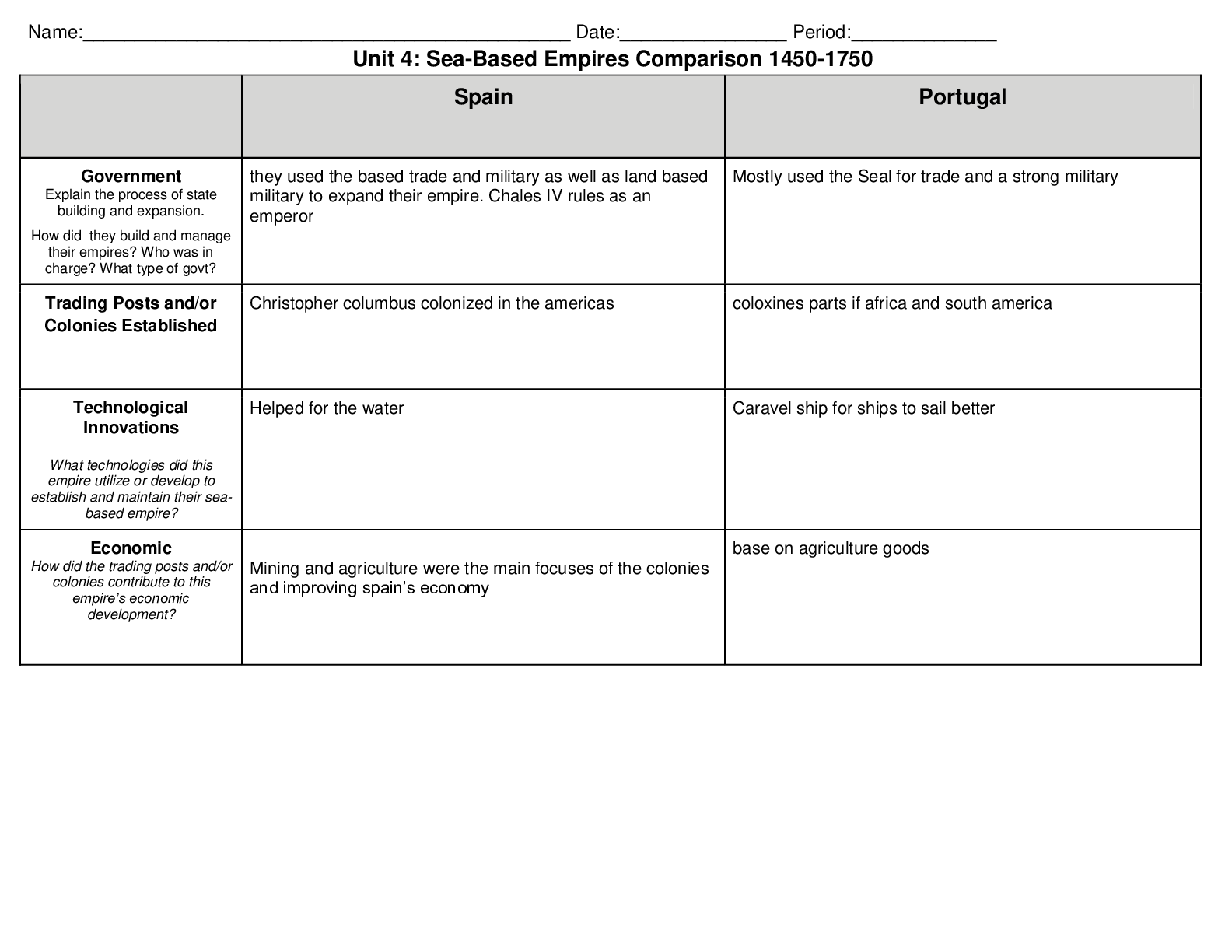

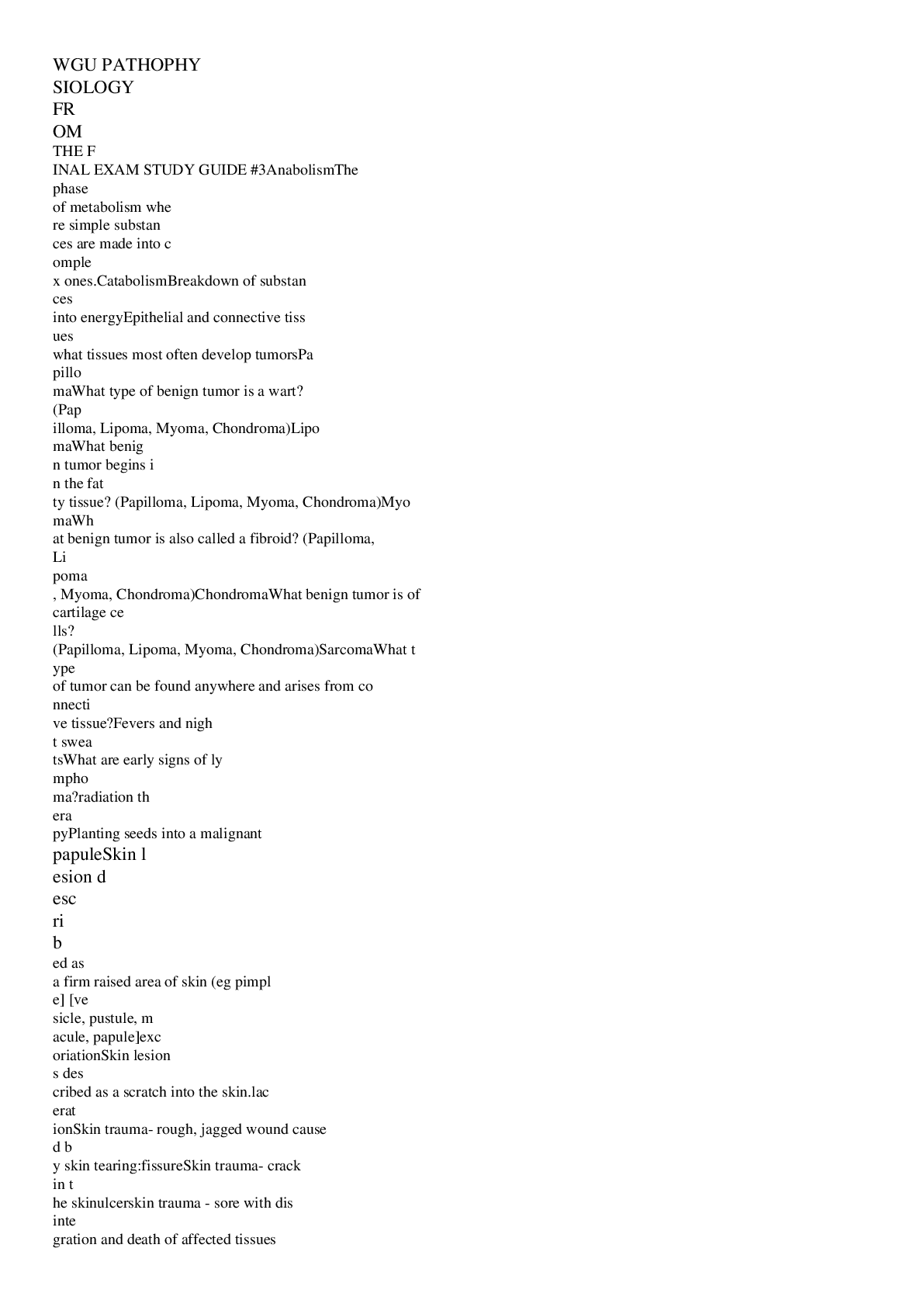



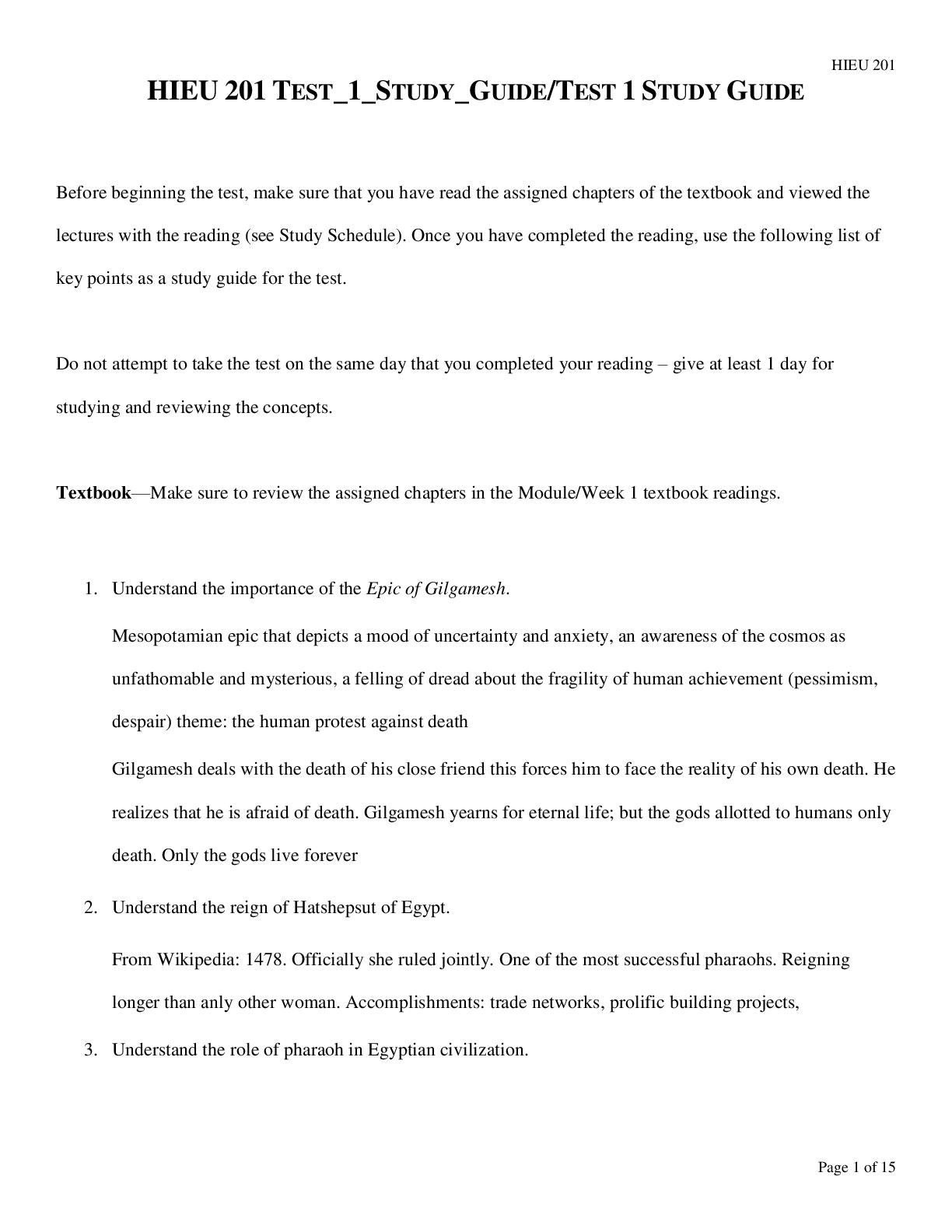


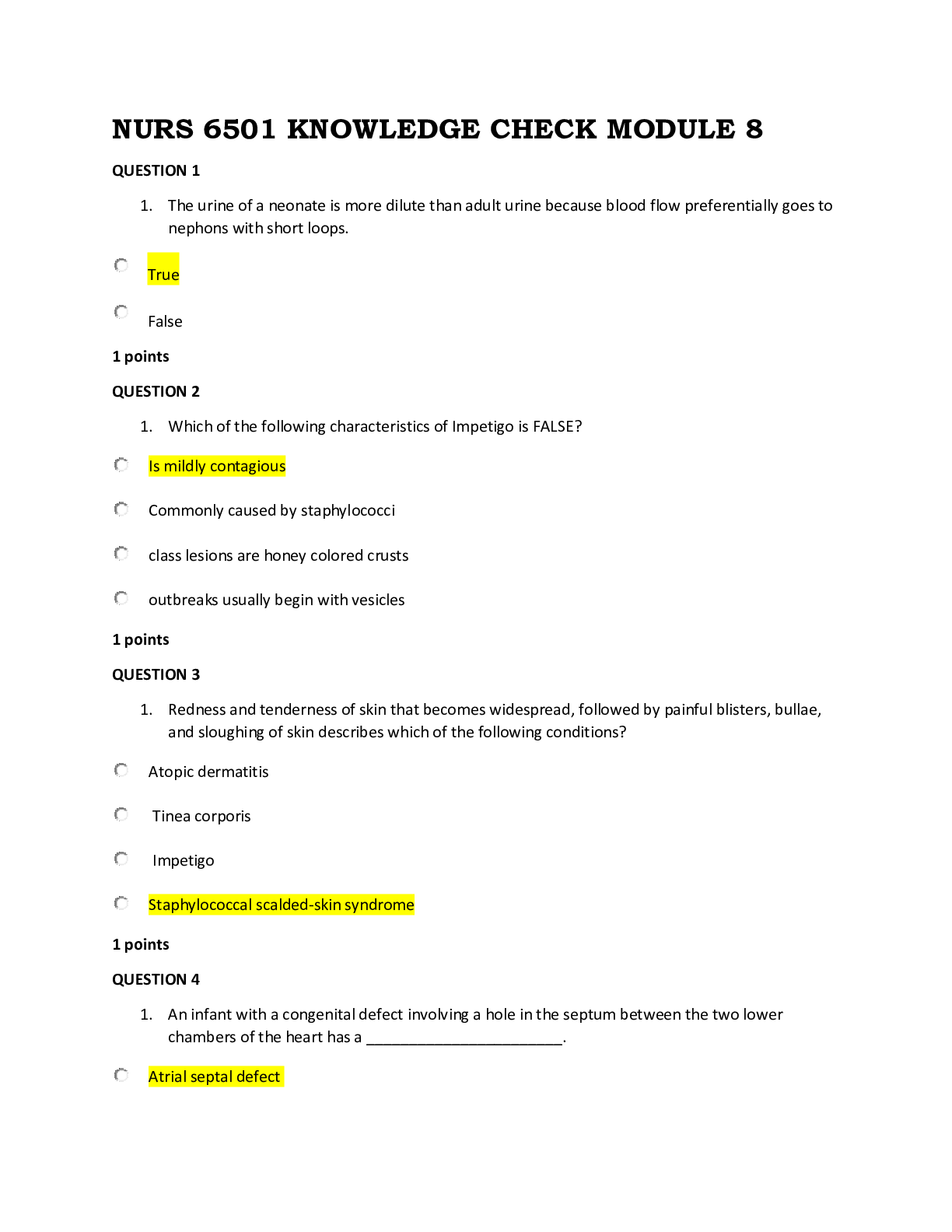
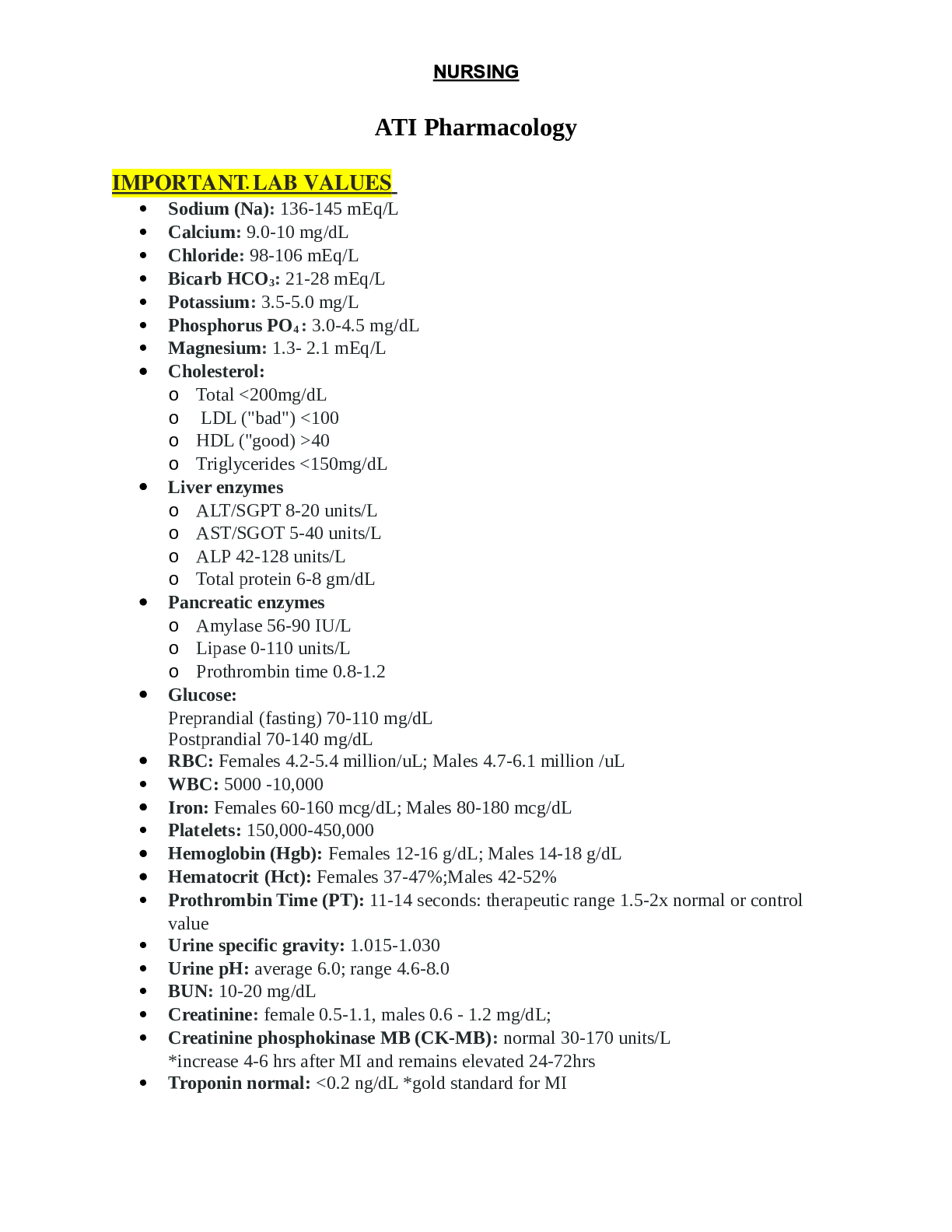
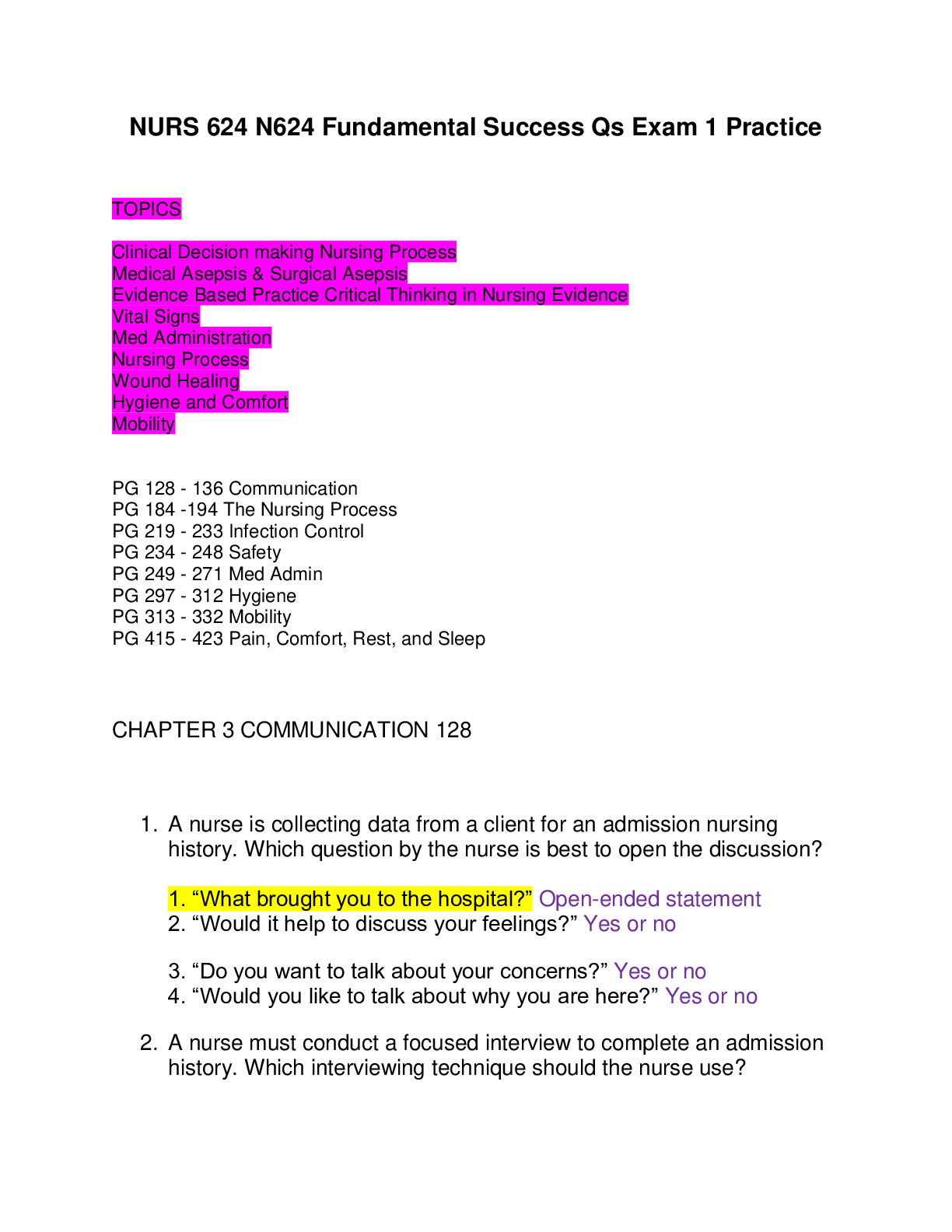
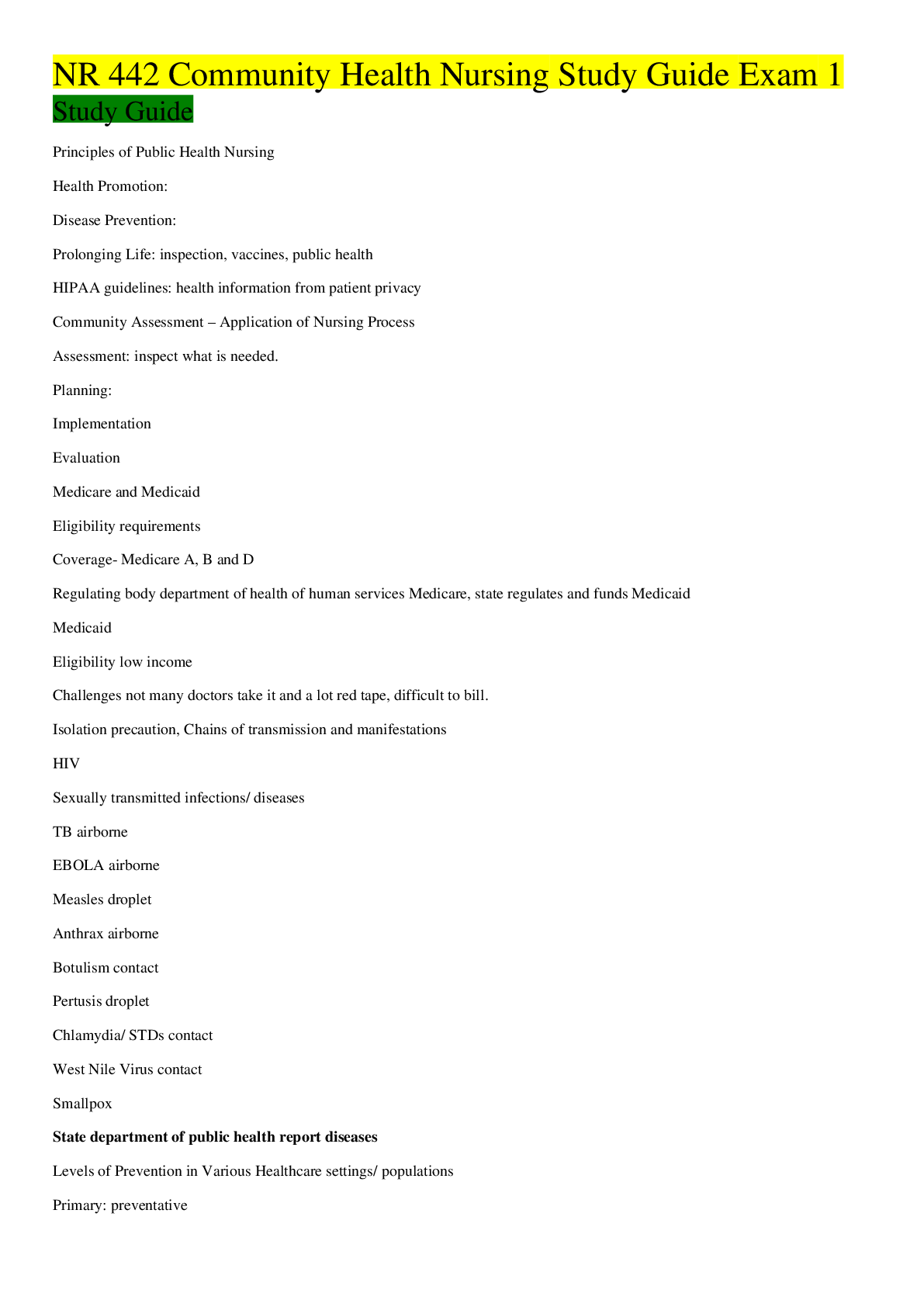
.png)
.png)


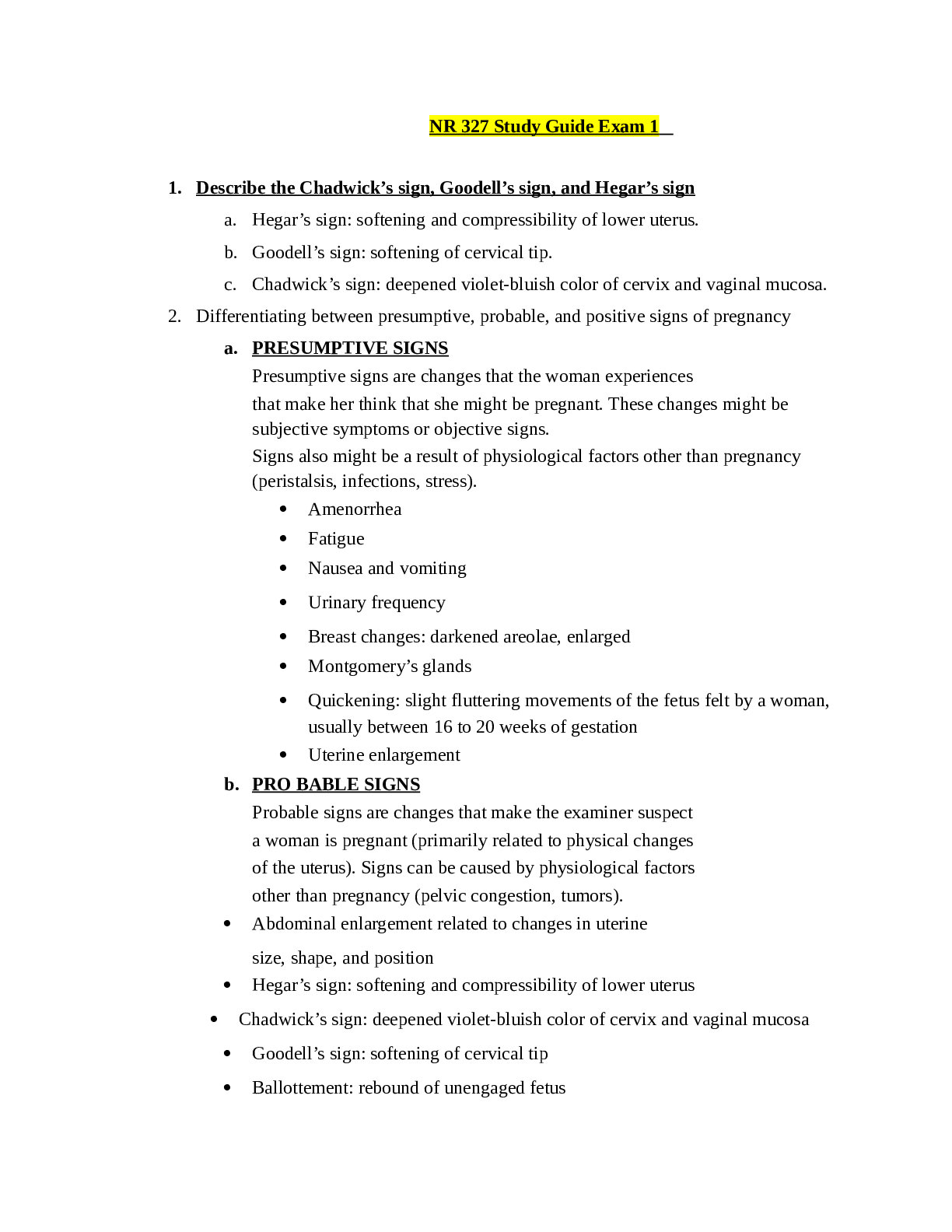



.png)
.png)

